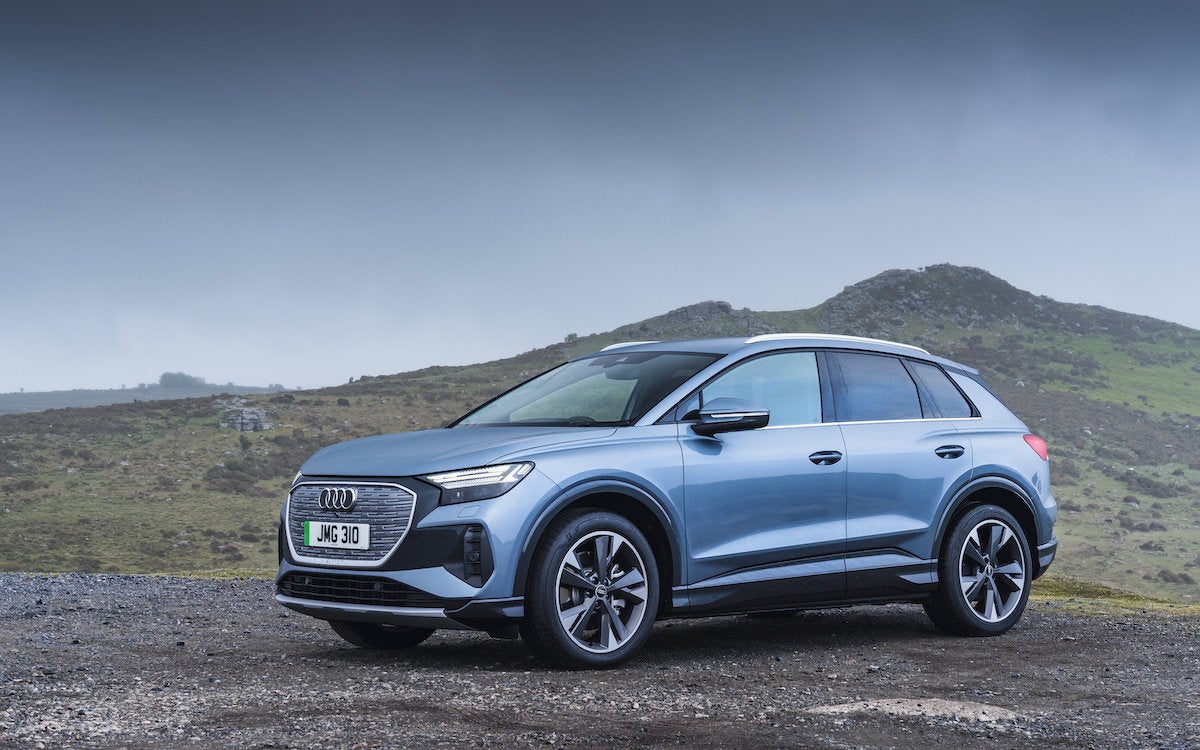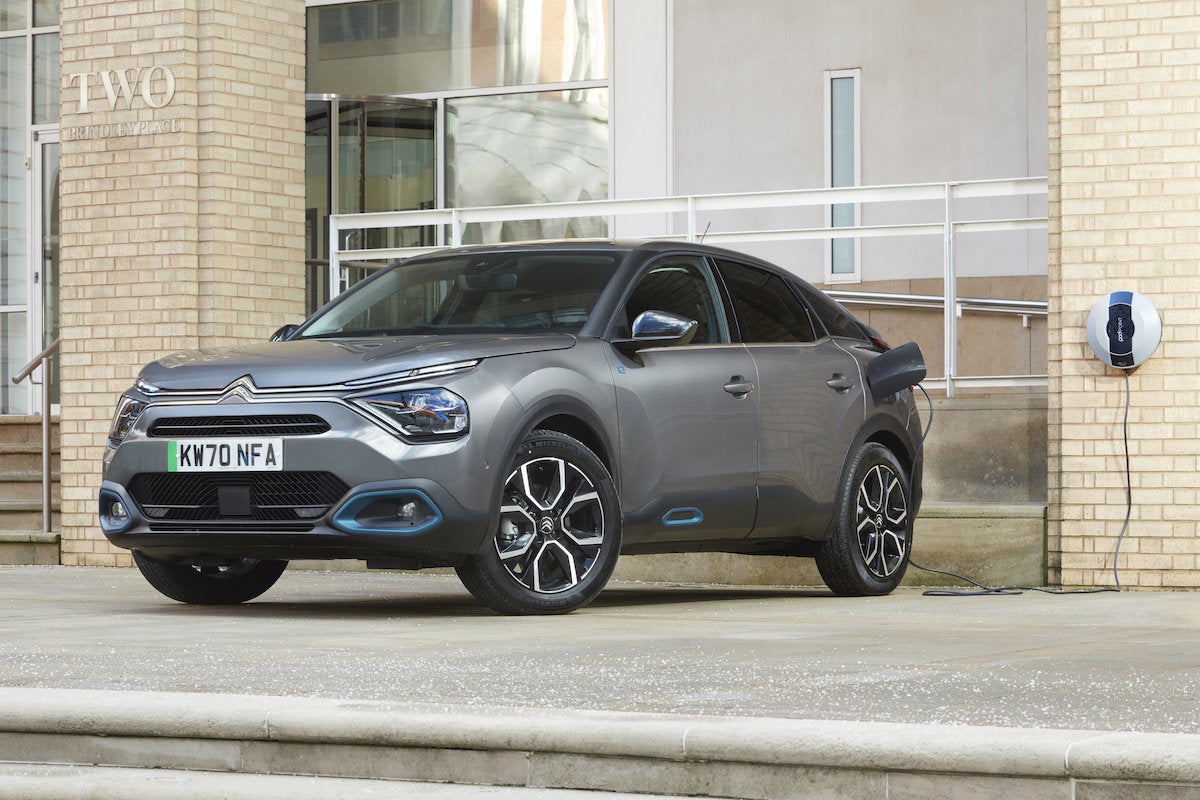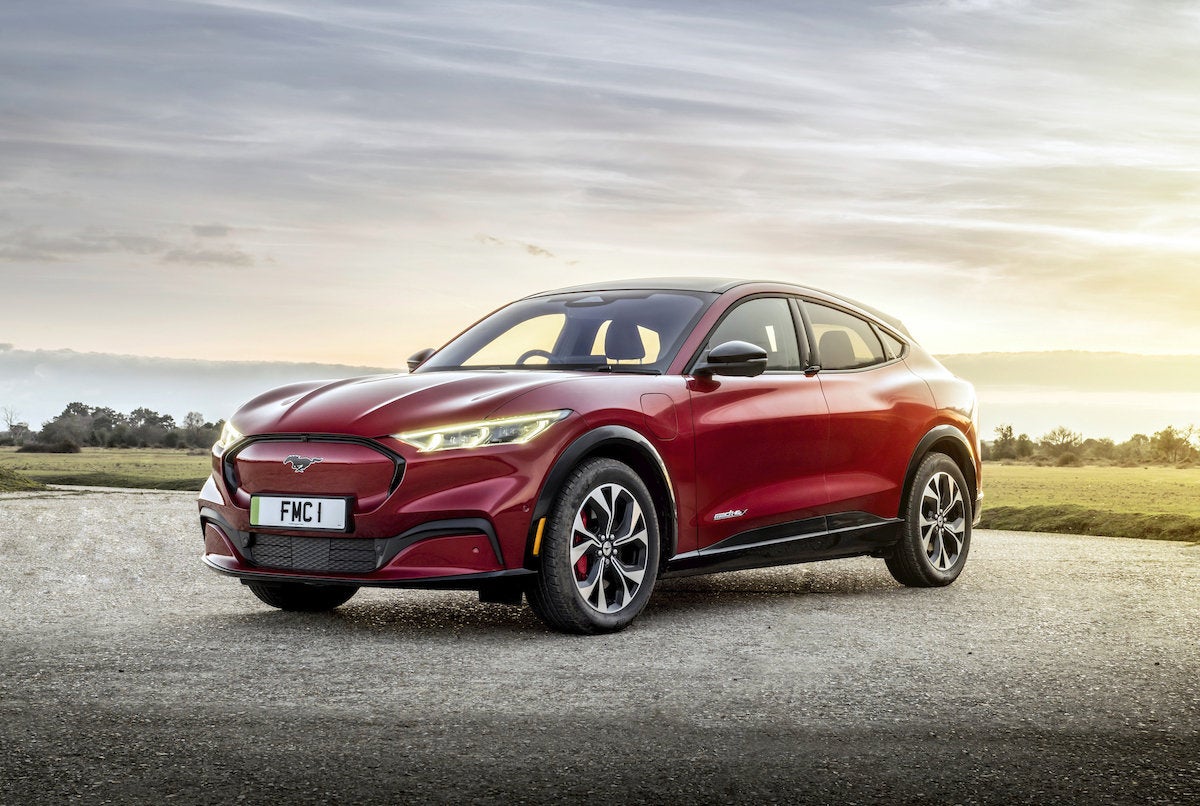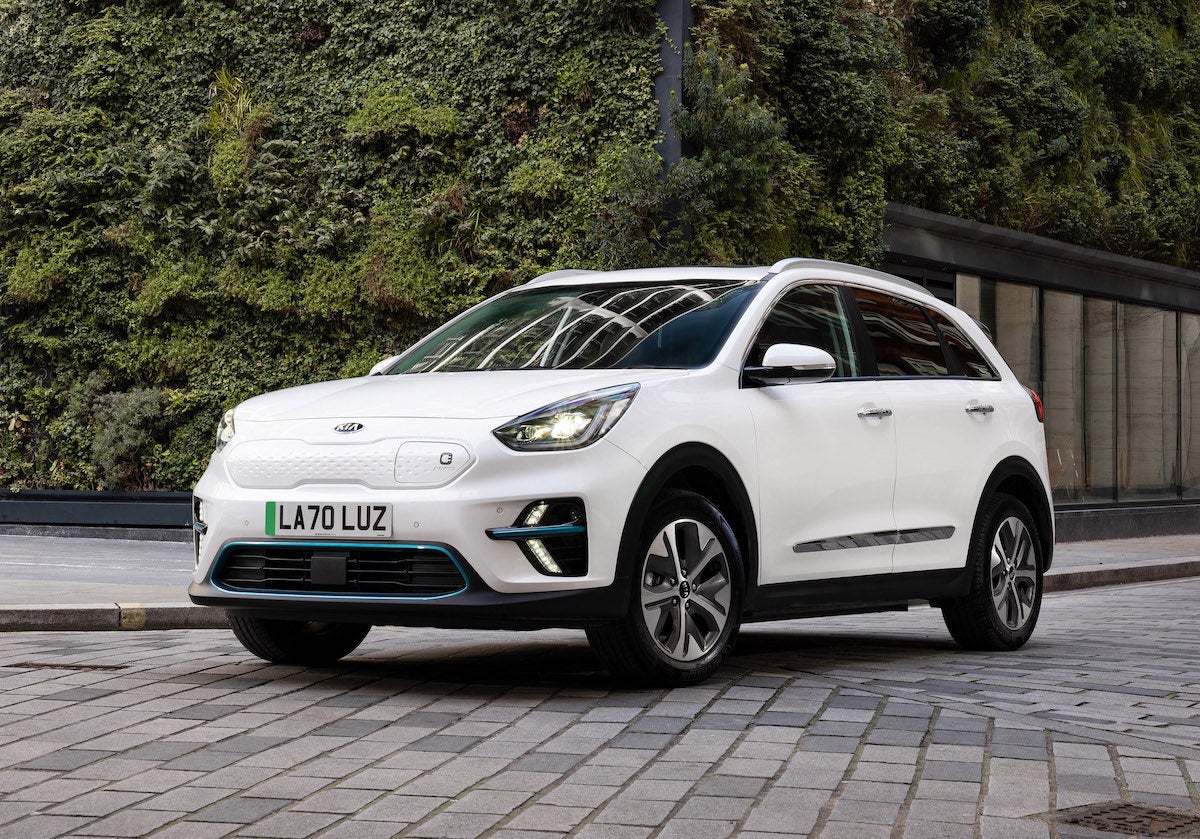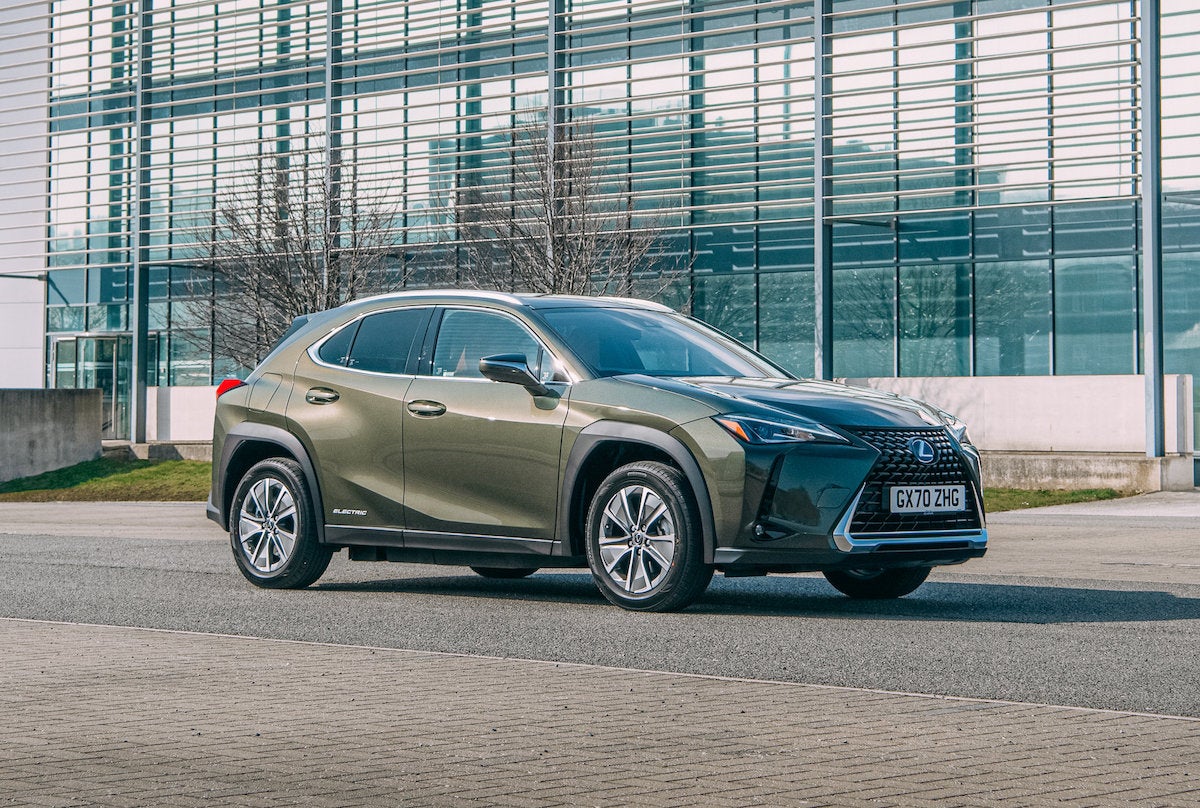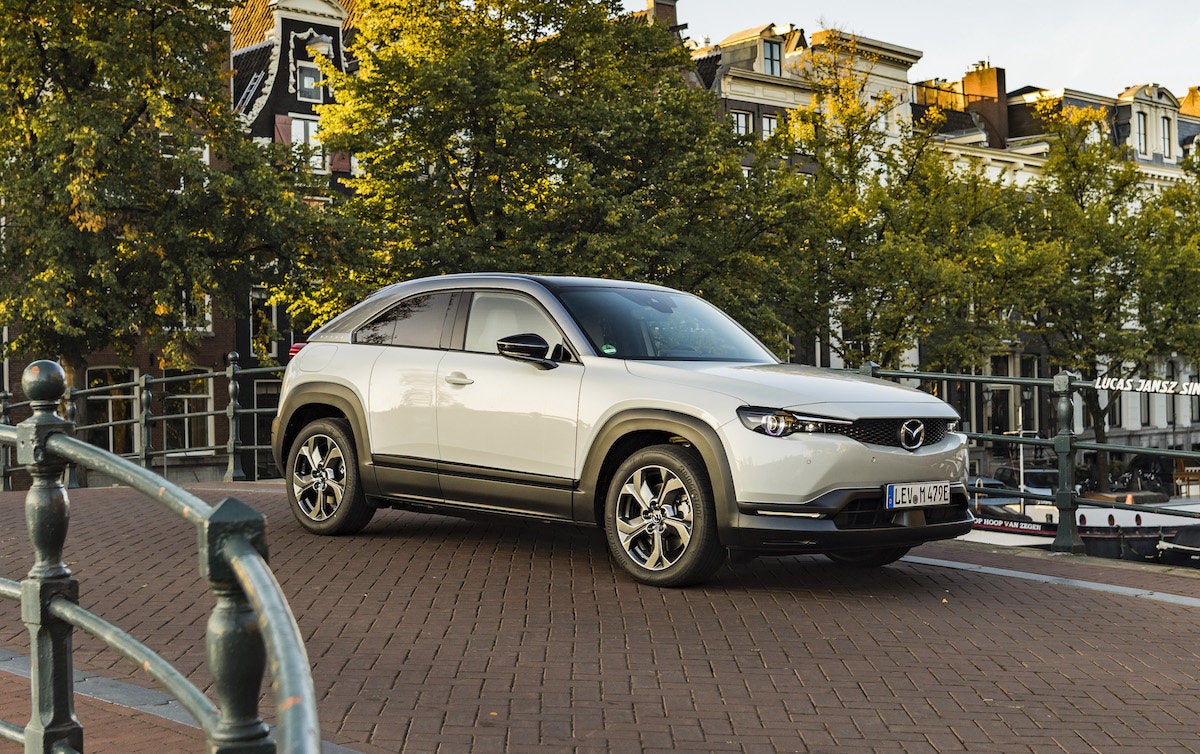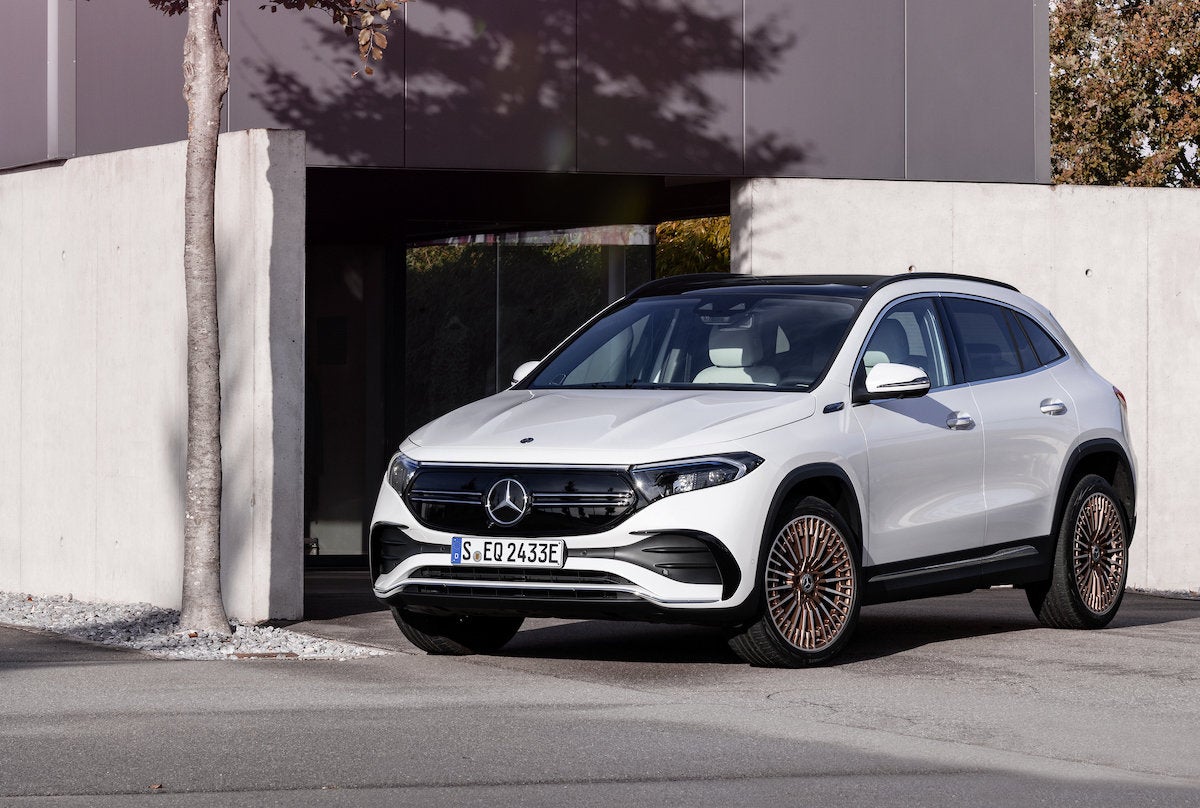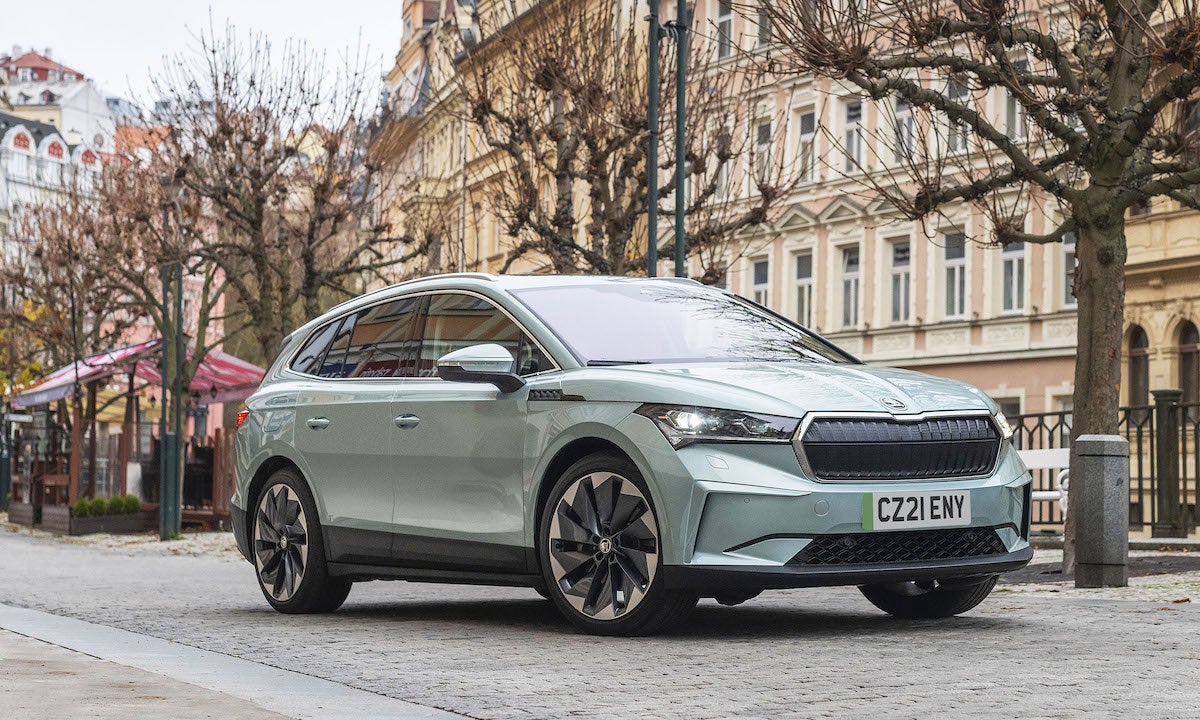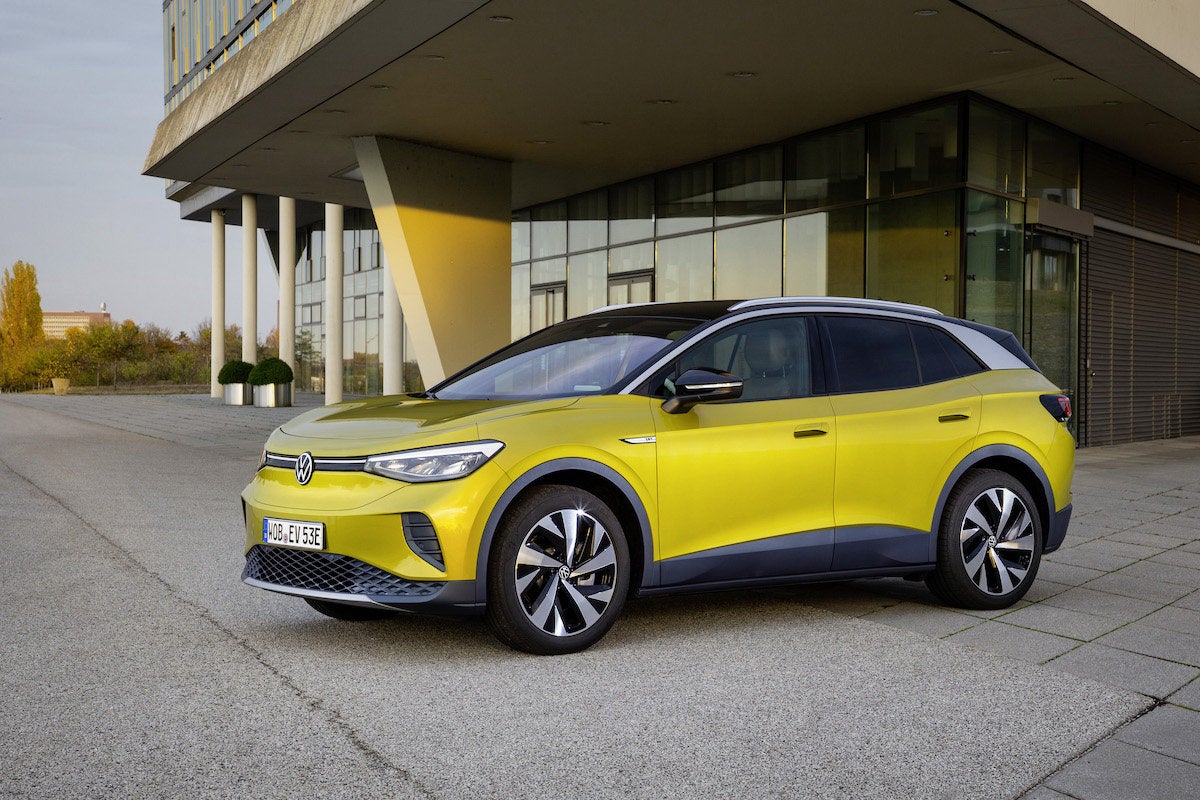Shopping for an electric family SUV right now is going to feel more exciting and potentially more daunting than ever before. Why? Choice. There’s just so much of it. Rewind a few years and the options were incredibly limited, but a few years back, in the summer of 2021, a flood of pure zero-emissions SUVs and crossovers hit the market all at once, introducing a fantastic amount of variety. That’s a good thing, obviously, but it also made it harder to figure out exactly which electric SUV is best for you.
Well, that’s why CarGurus did the hard work for you. In this test, captured at the time both on video and here in written form, we brought together no fewer than 10 electric family SUVs, and assessed their practicality credentials, their build quality, what the driving experience is like, and we also pulled apart the essential cost and ownership information, including estimated monthly finance. Of course, we’ve also looked at how far these electric vehicles can travel in between charges, and how easy and quick they are to charge.
If you want to know more about each of our test cars, click on the links below to read our full expert reviews. Or keep reading to find out how they fare in our Electric SUV Megatest.
The Best Electric SUVs: The CarGurus EV Megatest!
The Contenders
- Audi Q4 e-tron
- Citroen e-C4
- Ford Mustang Mach-E
- Kia e-Niro
- Lexus UX300e
- Mazda MX-30
- Mercedes-Benz EQA
- MG ZS EV
- Skoda Enyaq iV
- Volkswagen ID.4
Audi Q4 e-tron 40 Sport
Audi Q4 e-tron Review
Search for an Audi Q4 e-tron on CarGurus
Citroen e-C4 Sense Plus
Citroen C4 Review
Search for a Citroen C4 on CarGurus
Ford Mustang Mach-E Standard Range
Ford Mustang Mach-E Review
Search for a Ford Mustang Mach-E on CarGurus
Kia e-Niro 3
Kia e-Niro Review
Search for a Kia e-Niro on CarGurus
Lexus UX300e
Lexus UX300e Review
Search for a Lexus UX300e on CarGurus
Mazda MX-30 GT Sport Tech
Mazda MX-30 Review
Search for a Mazda MX-30 on CarGurus
Mercedes-Benz EQA 250 Sport
Mercedes EQA Review
Search for a Mercedes-Benz EQA on CarGurus
MG ZS EV Exclusive
MG ZS Review
Search for an MG ZS EV on CarGurus
Skoda Enyaq iV 80 Loft
Skoda Enyaq Review
Search for a Skoda Enyaq on CarGurus
Volkswagen ID.4 Life Pro Performance
Volkswagen ID.4 Review
Search for a VW ID.4 on CarGurus
How Practical are these Electric SUVs?
The scores at a glance...

There are only two cars in this test that are small enough that a four-person family would struggle to use them: the Lexus UX and the Mazda MX-30. In the case of the Lexus it’s hard to forgive, because it is also one of the most expensive cars here (more on that below), but nevertheless, it is sufficiently cramped in the back that a toddler in a bulky car seat will be kicking the front seats endlessly, or a teenager will be short of headroom – and the UX300e is one of the worst cars here for boot space. An SUV it might be, and the styling is great, but it’s really not a car for people with children, dogs, friends or luggage.
The Mazda is a little different, as it is intended to be more of a compact urban SUV. However, while it is still roughly the size of a Volkswagen Golf, it has far less legroom than an average family hatchback, never mind the SUVs it’s up against here. In the Mazda’s favour, it does have a lovely interior, with striking cork inserts that give it a classy finish, but that doesn’t make up for the limited rear space or the small boot.
Those two aside, the other eight cars here are all up to the task of being a family SUV. The Citroen e-C4, the Kia e-Niro and the Mercedes EQA are on the smaller side in this company, but they’re still roomy enough for lanky teens to slump in comfort, and the boots will take a chunky double buggy (albeit only just in the Mercedes’ case).
The rest – that’s the Ford, the Skoda, the VW, the Audi and the MG – are as spacious and as comfortable as you’d expect an SUV to be, with big boots and storage aplenty. The Ford Mustang Mach-E’s storage space in the nose is a useful trick (for stowing the charging cable or other objects), and it has a particularly noteworthy infotainment screen that’s very Tesla-like, and gives it the edge on tech. The MG ZS is also worth mentioning here, because it is genuinely spacious despite being remarkably cheap, so do check it out if low costs and boot space are a priority.
If it’s a premium feel you’re after, then the Audi Q4 e-tron and the Mercedes EQA will impress. Both have plush, high-quality interiors befitting their price, but in a comparison of aesthetic and perceived plushness, we’d give the nod to the beautifully-finished Mercedes.
Overall though, it is the Skoda Enyaq iV and the VW ID.4 that prove the most spacious and family-friendly of our electric SUVs. Both have huge boots, masses of room to lounge in the back and lovely, classy cabins.
Electric SUVs Range and Charging
The details at a glance...
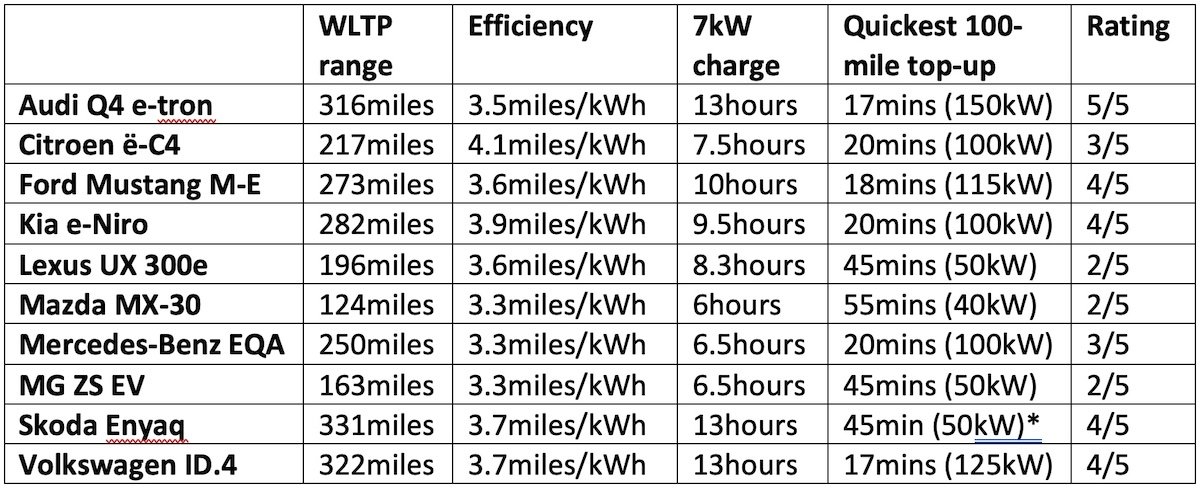
(*Or 17 mins at 125kW with optional fast-charging costing an additional £440)
On to the electric car basics, and sadly it’s the Lexus UX and Mazda MX-30 that once again finish bottom of the pile. The Mazda, in its defence, is up front about being an urban-oriented small SUV that’s designed for people who don’t need a long range. There are plenty of those city-dwelling types out there, for whom a cheaper EV with a smaller battery can make sense. However, next to these rivals, the Mazda’s official range of 124 miles on a single charge is just too limiting. So, while the MX-30 may still suit a small, urban family with a short-hop lifestyle, it’s the first to be eliminated.
The Lexus’s circa-200-mile range is underwhelming, especially because it’s one of the more expensive cars here, and you’ll also find a CHAdeMO fast charging socket instead of the European standard CCS socket used by every other car in this test (and almost every other EV on sale). Sure, there are CHAdeMO connections at many public chargers, but CCS promises to be more convenient as the charging infrastructure evolves, and the UX’s maximum 50kW charging speeds are half those of many other cars here. That means it’ll take around 45 minutes to top up with 100 miles of range at a 150kW ultra-rapid charger, while most others here will do the same in around 25 minutes or less.
That’s not the case with the MG ZS, though, which is also capped at 50kW, and has a lower range than most others here, so it joins the Mazda and Lexus on the naughty step. That’s not the case with the MG ZS, though, which is also capped at 50kW, and has a lower range than most others here, so it joins the Mazda and Lexus on the naughty step.
The Citroen e-C4 looks a little underwhelming next to longer range alternatives, such as the Kia e-Niro, but the combination of 100kW charging from a CCS socket, and range of around 200 miles is becoming something of an industry standard for EVs of the Citroen's price and size. Unless you routinely do long journeys, this sort of range and the use of the (rapidly improving) public charging infrastructure is likely to be enough for most families.
The Mercedes EQA and the Ford Mustang Mach-E look a tad middling on range and charging speeds, given what else you can get at their level, but they’ll certainly do the job with relative ease even if your mileage is higher.
A significant nod should also go to the Kia e-Niro, which may fall short of the official range on offer in the Audi, the VW and the Skoda, but we’ve done a lot of miles in the Kia over the years, and it has routinely proven to be a benchmark for efficiency. It’ll do 4.0 miles per kWh with ease in the real world, even in colder weather, which is basically the EV-speak way of saying that it’ll do some 60mpg while the others will probably only do 45-50mpg. Despite its smaller battery, we wouldn’t be at all surprised to find the Kia delivering a similar real-world range to the ID.4, the Enyaq iV and the Q4 e-tron. It remains a great long-range EV.
If you can stretch to the price, the Audi Q4 e-tron is the fastest charging car here, but the VW ID.4 and the Skoda Enyaq actually offer slightly longer range and, as long as you’ve added the optional 125kW charging upgrade to the Skoda (that’s £440 very well spent), it will also deliver a very useful battery top-up in the time it takes a barista to misspell your name. While the Q4 is impressive for charging speed, it’s the Skoda and the VW that promise to be best at keeping range anxiety and charging woes at bay.
Driving Impressions
The scores at a glance...
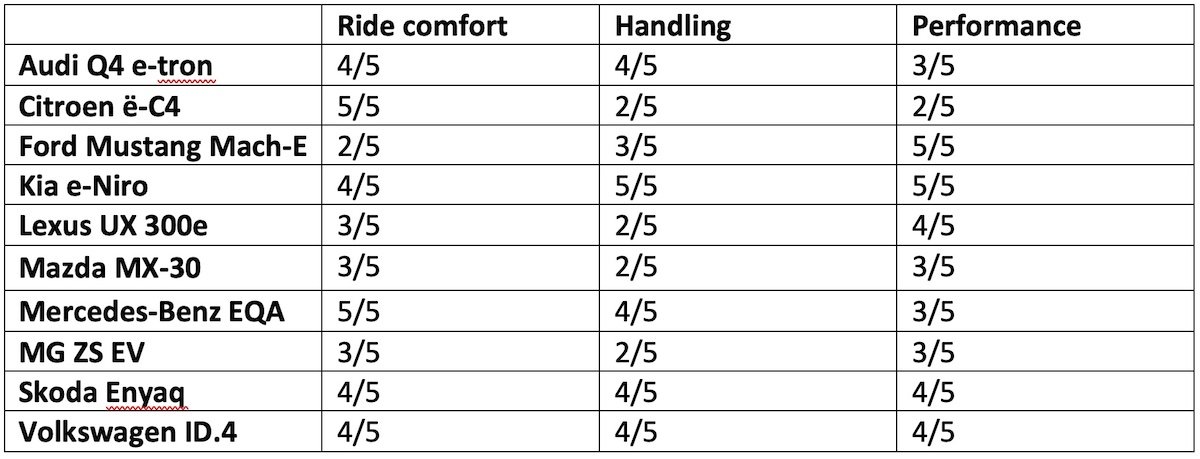
It will come as no surprise that the three VW Group cars – the Audi, the Skoda and the VW – all feel rather similar on the road. They do, after all, share a platform, a powertrain, a battery and more; all are rear-wheel drive (though also available with all-wheel drive), and deliver plentiful grip and predictable, but hearty acceleration. Unusually, the Audi has the lightest steering (not to mention a quirky, squared-off steering wheel) of the three, and actually feels a little sloppier in terms of its body control through fast direction changes. All have variable drive modes and, more importantly, they all offer a well-judged balance of a comfortable ride and precision, but – and we’re splitting hairs here – it is the Skoda Enyaq iV that is the most rounded out of the three when it comes to comfort and handling. In fact, it is one of the best cars to drive of the whole lot, such is its easy, slick balance of comfort and precision.
Talking of comfort, the Citroen e-C4 is quite something. It is pillowy soft in a way that not enough modern cars are, especially electric cars that also have to contend with hefty battery packs. The trade-off, however, is a lot of quite lean when cornering, and the steering is so light that it’s a little disconcerting at higher speeds.
Similarly, the MG ZS EV and the Lexus UX are comfortable and have very light steering, although neither quite matches the Citroen for ultimate ‘bump, what bump?’ ride quality. The front-wheel-drive Lexus is also too eager to spin its wheels, even if you just try to make the most of the decent acceleration on offer as you exit a corner. The Citroen, the MG and the Lexus all deserve credit for putting comfort first, and for being smooth, easygoing steers on the motorway and in town, but all of them deliver that at the cost of uninspiring handling.
You can’t say that of the Ford Mustang Mach-E, which is zingy enough to really satisfy on a good road and steers predictably, so it equally suits a calm swish through the school run. However, Ford has perhaps chased the performance aspect a little too much, because the Mach-E also has the firmest ride here. The car never quite settles, thumping and shivering around town particularly, which is not ideal, regardless of the fact that it has the Mustang badge to live up to.
The Mazda’s steering is sweet and responsive, but it’s also the slowest car here, and it suffers from a surprising amount of body lean. Sadly, it continues to prove rather underwhelming in almost every aspect of our group test.
That leaves the Kia e-Niro and the Mercedes EQA. The Mercedes is very slick and poised; its excellent suspension irons out the worst of the road surface, while tidy handling and good body control make it confident on a winding road. Sure, the Ford has the edge on performance and handling, but in every other aspect, the more forgiving ride of the Mercedes and its intuitive nature make it one of the best all-round cars to drive.
Given Korean EVs can be a bit hit-and-miss, you might not expect the Kia to be noteworthy in this respect, but it is actually a real joy to spend time in. A punchy electric motor, with just about the best steering here in terms of predictable, nicely weighted responses and plenty of feedback, and it’s also comfortable on a bumpy road. The e-Niro is the oldest EV here by some margin, but it certainly doesn’t feel it.
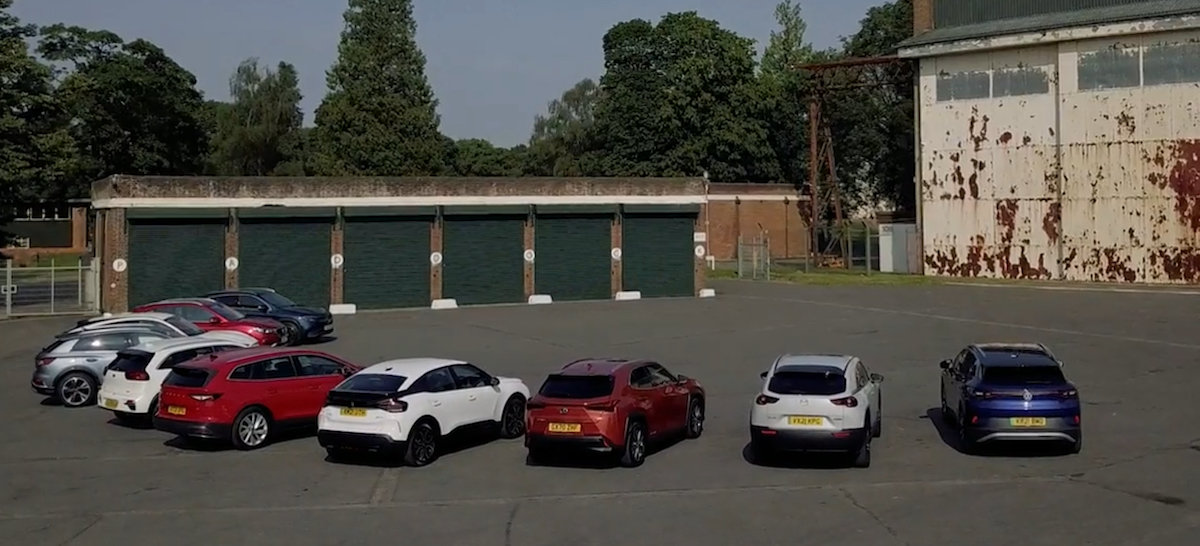
The Elimination
That leaves us to decide which of these electric SUVs is the pick of the lot. And it is a lot. Ten plug-in SUVs that demonstrate brilliantly how the proliferation of battery electric cars has now provided a fantastic array of choices for anyone in the market for a pure EV right now.
However, by process of elimination, the Lexus UX and the Mazda MX-30 are easy to lose from the off. Following that, the MG ZS EV is a little harder to shrug off given its excellent pricing (and for that reason we’d still recommend it as an entry-level option), but it is outclassed in just about every other area. Then there’s the Citroen e-C4, which is actually rather charming and justifiable in its own quirky way. Putting comfort first is all well and good, but the Citroen is also middling in many other respects, including driving range and handling, not to mention a touchscreen infotainment system of limited functionality. (which you can read about in the full review).
The Audi Q4 e-tron is appropriately plush and benefits from the fastest charging here, but it’s actually shown up by the VW ID.4, the Skoda Enyaq iV, the Ford Mustang Mach-E and the Kia e-Niro on various critical factors including price, handling and practicality. The VW ID.4, while very spacious, essentially feels like what it is: a considerably more expensive version of the Enyaq iV, but for little or no extra ability. So, while it’s an excellent all-rounder, the VW doesn’t quite make it into the top four – and the Enyaq does.

So to our top four, which reads Ford, Mercedes, Skoda and Kia. All are genuinely fantastic new cars, but we are looking for the best of the best. With that in mind, it’s the Ford that falls first. The Mustang Mach-E made it this far because it is spacious, fun to drive, has the most impressive infotainment system, and is also very good on electric range and charging aspects (you can get it with a bigger battery, albeit at a great jump in cost). But in a group this talented, there’s no hiding from its lack of comfort compared with our top three.
The Mercedes is a very compelling electric SUV, with an interior that wouldn’t feel out of place on a six-figure luxury car, and a fluid, engaging drive. But it is overshadowed for cost, range and – most crucially – practicality by the Skoda and the Kia, so it falls to third place overall.
Electric SUV Finalists and Winner
The Kia certainly deserves every bit of the remarkable renown and popularity it enjoys today, and if you don’t want a car quite as big as the Skoda (which is getting on for full-sized SUV dimensions next to the Kia’s Golf-like size) then it should be the first electric family SUV on your list. Alongside all these rivals, we couldn’t escape the sense that the Kia feels like the true, new ‘people’s car’ for the electric era, with costs, space, comfort and dynamics all sweetly judged and just right for a small family. We’d have one over almost every other car in this test and, for what it’s worth, we’d have it over VW’s ID.3 or ID.4, too. Sorry, Volkswagen.
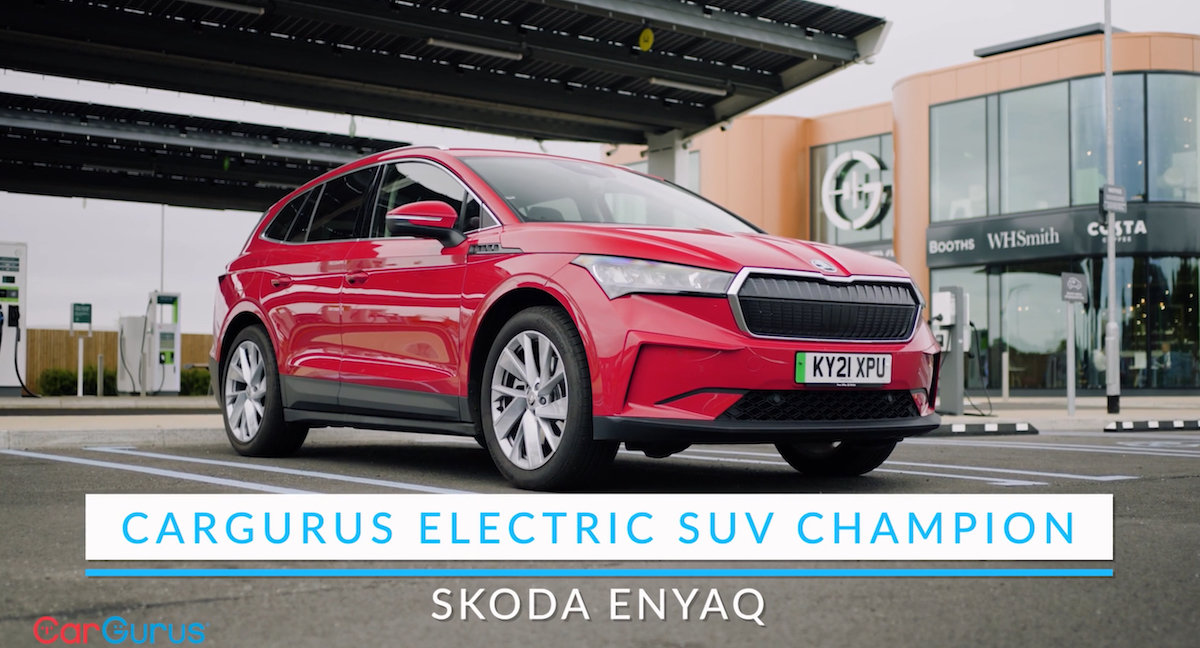
However, this is a battle of electric family SUVs, and the Skoda is much roomier than the Kia, so it’s much better for family life, plus it goes longer on a charge, and it simply offers more for your cash. It is just a brilliant all-rounder, and sets a new and very high benchmark for electric family SUVs. If you want the best electric SUV out there, the Skoda Enyaq iV is it, and that’s why it was our EV SUV car of the year for 2021.
Testers' Notes and Other Electric Cars to Consider...
A quick note on our methodology for composing the test. Obviously, there are plenty more electric SUVs on the market than those included here. However, we can only consider so many at one time, so we applied certain thresholds to render cars eligible for the test.
The first of these was a £45,000 price cap, introduced to give this test more of an attainable, real-world flavour (that was applied at the time of our test and prices of many cars have since risen). By itself, that price cap ruled out expensive options such as the Tesla Model X, Jaguar I-Pace, the BMW iX3, the BMW iX, the Mercedes EQC and the Volvo XC40 Recharge.
While the price cap limited the top end, we also applied a threshold at the bottom. As we’ve said, most SUVs – electric or otherwise – are used as family cars, and a decent family car has to be a certain size, so anything with a supermini footprint just doesn’t cut it on that score. We required contenders to have a minimum length of 4.3 metres – roughly the size of a Ford Focus, or what the motor industry refers to as a ‘C-Segment’ car. That ruled out smaller electric SUVs, including the Hyundai Kona Electric, the Vauxhall Mokka-e, the Peugeot e-2008 and the DS 3 Crossback E-Tense.
The cars that were included in the test constituted every pure-electric SUV on sale at the time (September 2021) that fell within those two thresholds.
‘At the time’ are quite important words here. As we’ve said, the pace of change in this area of the market is extremely rapid, and it wasn’t long (weeks rather than years) before even more new models came along, vying for your attention and your hard-earned. Would-be contenders already released since our test include the Tesla Model Y, the Nissan Ariya, Renault Megane e-Tech, BYD Atto 3, Toyota BZ4X and the Genesis GV60 among others, and although they probably would have been ruled out by one of our other thresholds, other EV SUVs to have been released since this test was conducted include the Jeep Avenger, Mercedes EQE SUV, Mercedes EQS SUV, and many more besides. And since this test was conducted, even one of our contenders has even been replaced, the Kia e-Niro making way for the new Kia Niro EV. And now, in the form of the Skoda Enyaq, we have the ultimate benchmark to test them all against.
Of course, there are plenty of exciting and tempting new EVs on sale now – and on the horizon – that aren’t SUVs at all. There are funky city runabouts, such as the Honda e and the MINI Electric, glamorous coupes in the form of the Audi E-Tron GT and the Porsche Taycan, luxury hatches such as the Polestar 2, the Tesla Model 3, and funky hatchback offerings such as the Hyundai Ioniq 5 and the Kia EV6. These are some of the best electric cars there are, and we wouldn’t blame you for being tempted by any of them, SUVs or not. What’s clear from all this, though, is that the future of electric motoring is looking very bright indeed.

